Irish National
War Memorial
Gardens
Islandbridge, Dublin
The Irish National War Memorial Gardens have gone through a series of mutations to get to where they are today. The concept, in 1919, was to honour the Irish who died in WWI. This applied both North and South as the whole island was then under British rule. Funds were raised by a special Committee at the time, but it was not until the period 1933-39 that the gardens were laid out and they were not formally officially dedicated and opened until 1988, almost 70 years after the original concept. There were various reasons for the delays both in construction and dedication, including wrangling over the location, the outbreak of WWII, and a certain national lack of interest by the "new" state in those who fought for the British.
My own particular family interest arises from the death of my uncle, John P Dwyer, on the Somme in 1916. I also had a grand-uncle who survived WWI, John Burgess. The gardens are also supposed to commemorate those who fought as well as those who died but almost the entire emphasis is on the latter.
I have done some posts on this on my blogs, in English, and in Irish.
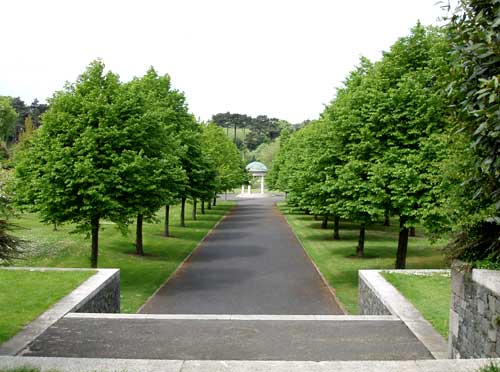
The gardens were designed by Sir Edward Lutyens, who had also designed memorials in other parts of the world. This one is in a very favourable location on the southbank of the Liffey. A series of tree-lined avenues radiate from a "temple" and give a magnificent approach to the main commemorative area. Each avenue is planted with different varieties of trees. You can see the plan from the air thanks to Google maps.
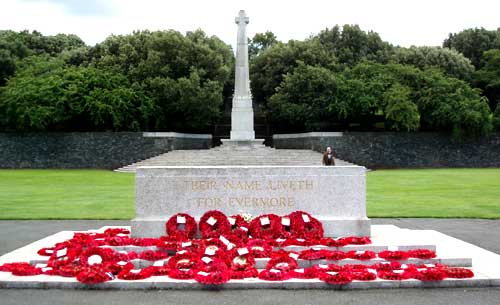
The centrepiece of the main area is the "War Stone" set out like an altar, with the Great Cross directly behind it. The stone is the same proportions as others in other locations. The inscription in front reads "Their name liveth for evermore". A little ironic given the neglect of decades but happily now fully honoured not only in the concept but in the active maintenance of the site.
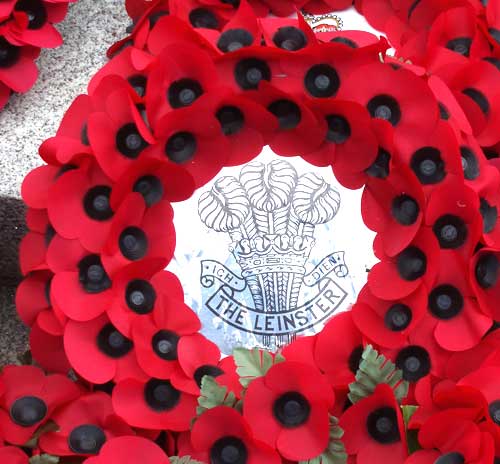
The site is now the focus of various commemorative ceremonies during the year. Signs of one such commemoration were still in evidence on one of my visits.
The poppy plays a large part in these ceremonies as it evokes the slaughter fields where it grows in great profusion. To the British it is purely a symbol of commemoration, honouring the dead, and supporting the charity that sees after dependents and survivors. Unfortunatley, it has been seen as a provocative sectarian symbol by many nationalists both North and South. While this is understandable in view of the long history of oppression of nationalists by Crown forces, it is also anomalous given the significant number of Irish people who died in the British Army in WWI (and also, of course, in WWII, but that story is for another time and place).

The Great Cross can also be viewed across the restful waters of the obelisk fountains. These obelisks flank the "altar" stone and represent candles.

Equally the cross can be viewed out on its own or in the context of the pavillions which surround the main enclosed area.
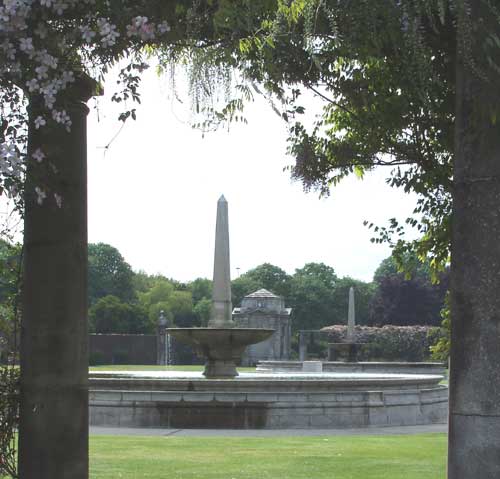
The two candles which flank the "altar".
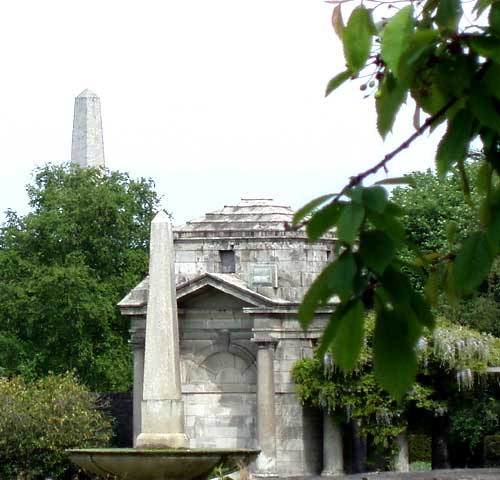
One candle echoed in the near distance by the Wellington Testimonial in the Phoenix Park. The Pavillion is one of four which house various artifacts but principally a copy of the volumes of the roll of honour which record the names and some details of those Irishmen (North and South) who died in the "Great War for Civilisation".
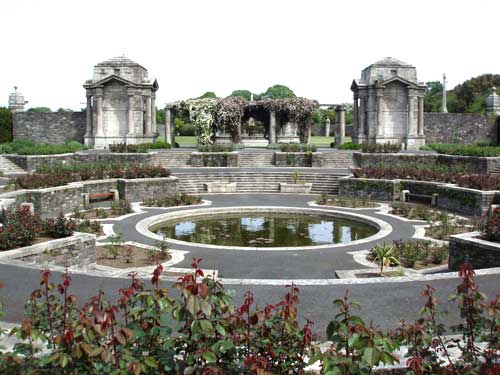
One of the two rose gardens and ponds just before blooming time. You can see one pair of the four pavillions here. They are echoed on the other side of the main lawn where there is another rose garden.
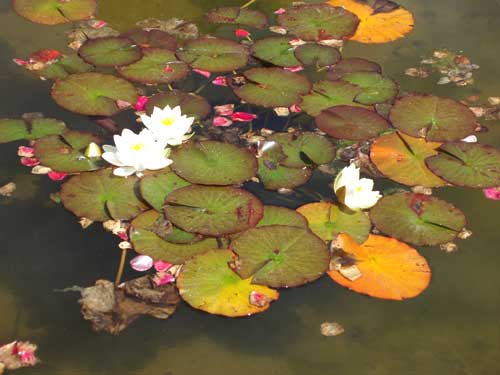
We can leave the rather cold atmosphere of the pavillions, walls and terraces (at the time of my first visit) and go out on a warmer note: the floating leaves and flowers in the pond (at the time of my second visit: a Dublin City Council walk). Further background is available on Wikipedia
The Dublin blog, Come here to me!, has done a piece on the various attacks on the memorial over the years.